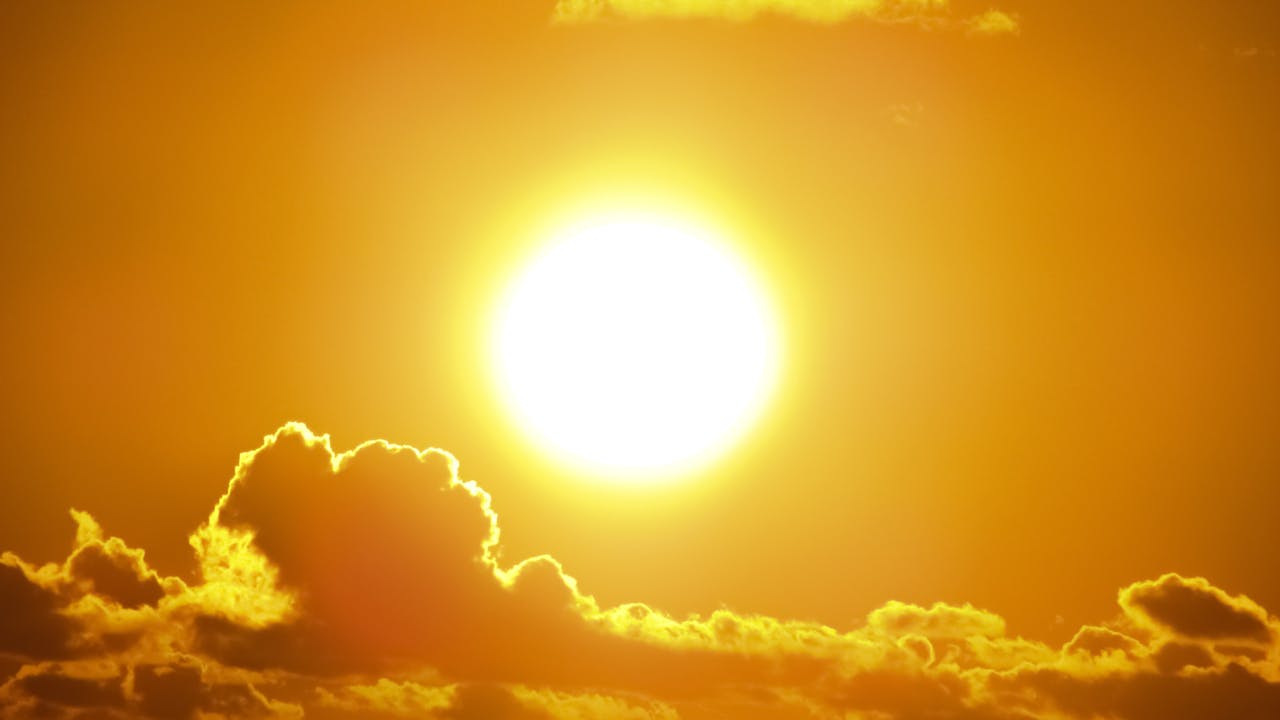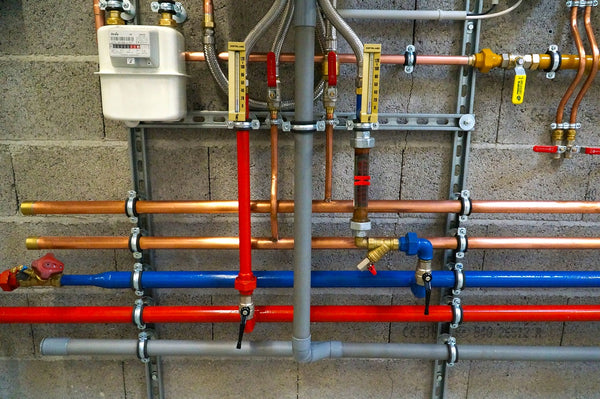1-800-540-905
Info@HomesteadSupplier.com
7am-4pm Pacific Time Mon-Fri
1-800-540-9051
Info@HomesteadSupplier.com
7am-4pm Pacific Time Mon-Fri
1-800-540-905
Info@HomesteadSupplier.com
7am-4pm Pacific Time Mon-Fri
1-800-540-9051
Info@HomesteadSupplier.com
7am-4pm Pacific Time Mon-Fri

At Homestead Supplier, we understand the challenge of figuring out how to keep a shed warm without electricity, especially during those colder months when your cherished outdoor space turns into a chilly retreat.
With years of experience crafting and selling top-notch shed-building kits, we've put our expertise to the test and gathered a treasure trove of innovative, non-electric heating solutions.
From harnessing the natural warmth of the sun to the rustic charm of wood-burning stoves and the ingenious use of thermal mass, our guide is designed to offer practical and effective strategies to transform your shed into a cozy haven.
What this article covers:Proper insulation is paramount in controlling shed temperature and keeping it warm. It acts as a barrier against the cold, ensuring that the warmth generated inside stays put. Utilizing materials like fiberglass or foam board insulation can significantly enhance this effect.
These materials trap air, which is a poor conductor of heat, thereby reducing heat loss. Sealing drafts around doors and windows with weatherstripping or caulk further fortifies your shed against the cold, making any heating method you choose much more effective.
Capitalizing on sunlight is a cost-effective way to bring warmth into your shed. Installing large windows or transparent roofing panels in areas that receive ample sunlight can turn your shed into a naturally warmed space.
This method not only provides heat but also floods your shed with natural light, creating a bright and inviting environment. The key to maximizing this effect is to position these windows or panels to face the sun's path, ensuring they capture as much sunlight as possible throughout the day.
Wood stoves offer a traditional and efficient way to heat your shed. The warmth from a wood stove is unmatched in its ability to create a cozy atmosphere. Ideal for larger sheds, wood stoves require proper installation and a well-ventilated area to ensure safety and efficiency.
It's important to adhere to local regulations and safety guidelines when installing a wood stove, including maintaining a safe distance from combustible materials and ensuring proper chimney installation.
By equipping your shed with solar panels, you harness the boundless energy of the sun, transforming it into a steady stream of warmth that's both eco-friendly and reliable. This makes it a fantastic way of running electricity to a shed without having to worry about power lines.
Beyond panels, solar generators offer a versatile alternative, storing solar energy to provide power on demand, ensuring your shed remains warm even when the sun isn't shining directly.
The beauty of solar technology lies in its simplicity and the promise of renewable energy, which, once harnessed, requires minimal ongoing costs. The initial investment in solar panels or generators pays off in the long run, as the sun's generous rays continue to provide cost-effective, green energy.
Opting for solar power aligns with environmentally conscious values but also proves to be a wise financial decision. It offfers a sustainable source of warmth for your shed without the recurring expenses of traditional heating methods.
For those considering going solar, our range of Bluetti solar generators stands out as a high-quality and long-lasting option, ensuring your shed will stay heated for years to come. Interested in this option? Read our guide on how to set up solar panels for shed
Propane heaters provide a quick and easy solution for heating your shed. These heaters are ideal for those who need occasional warmth, offering a convenient way to heat your space without permanent installations.
When using propane heaters, it's crucial to ensure proper ventilation to prevent the buildup of harmful gases. Always follow the manufacturer's safety instructions and consider using a carbon monoxide detector as an additional safety measure.
Just be sure to learn how to waterproof a shed and what to put around bottom of shed to keep water out to ensure that your propane heater stays safe during the rainy months.
The concept of thermal mass might sound complex, but it's based on a simple principle: some materials are just better at holding onto heat.
By integrating materials like concrete, brick, or even strategically placed water containers into your shed's design, you create a natural heat reservoir. During the day, these materials soak up warmth from the sun or your chosen heat source.
Then, as temperatures drop, they gradually release this stored heat, keeping your shed's interior pleasantly warm.
This method shines when used alongside solar heating solutions. The solar panels or air heaters provide the heat, and the thermal mass materials ensure it sticks around, smoothing out temperature fluctuations and extending the warmth long after the sun sets.
Rocket stoves are an efficient and low-cost heating solution for the hands-on individual. These stoves use small amounts of wood to produce a large amount of heat, making them an economical choice.
Building a rocket stove can be a rewarding DIY project, offering a sustainable way to heat your shed with minimal environmental impact.
Installing hot water pipes is an innovative way to distribute heat throughout your shed. This system involves heating water externally, such as with a wood-fired boiler, and circulating it through pipes laid under the floor or along the walls of your shed.
The radiant heat from the pipes warms the surrounding area, providing a comfortable and even heat distribution. This method requires more complex installation but can offer a unique and effective heating solution.

Choosing the right non-electric heat source for your shed is more than just picking what looks good; it's about matching your unique needs with the right solution. Let's dive into the key factors you should consider:
Your budget is a critical factor in the decision-making process. While some heating options may appear cost-effective initially, it's important to consider both the upfront costs and the long-term operating expenses.
For example, a wood stove might have a higher initial cost but can be economical over time if you have access to free or low-cost wood. Evaluate your financial constraints and aim for a heating solution that balances initial investment with ongoing costs.
Insulation quality is paramount in keeping your shed warm. Proper insulation acts as a barrier, keeping the warmth inside and the cold outside, much like a thermal blanket enveloping your space.
Assess the current insulation in your shed, paying attention to walls, ceilings, and floors. After putting it to the test, we've found that upgrading insulation where needed can significantly enhance the effectiveness of your chosen heat source. This leads to a warmer, more comfortable environment.
The size of your shed significantly influences your choice of a heating solution. Smaller spaces, like a cozy art studio, can be efficiently warmed with less powerful heaters, while larger areas, such as expansive workshops, demand more robust heating solutions.
It's crucial to select a heat source with the appropriate output for your space to avoid underheating or overheating. Measure your shed's dimensions and consult with experts if necessary to find a heater that matches your shed's volume.
Maintenance and safety are intertwined aspects of choosing a non-electric heat source. Consider the maintenance requirements of each option, such as the need to regularly clean a wood stove or check connections on a propane heater.
Safety is paramount, especially in structures made of combustible materials. Look for features like automatic shut-off on propane heaters and ensure proper installation and ventilation for wood stoves to mitigate risks.
The environmental impact of your heating choice is increasingly important. Renewable energy sources like solar power are ideal for minimizing your carbon footprint, offering sustainable warmth without the ongoing fuel costs.
If you prefer a wood stove, sourcing wood sustainably or using waste wood can reduce environmental impact while providing natural warmth.
Proper ventilation is crucial, especially for combustion heaters like wood stoves or propane heaters, to prevent the buildup of harmful gases. Assess your shed's existing ventilation and consider any modifications needed to accommodate your chosen heat source.
Beyond just cooling a shed, adequate ventilation ensures a safe, breathable environment while allowing your heater to operate efficiently.
Efficiency is about getting the most warmth from your heat source without unnecessary energy or fuel consumption. High-efficiency heaters distribute heat effectively throughout your shed, maintaining a comfortable temperature with minimal waste.
Consider the efficiency ratings of different heaters and how they align with your shed's insulation and size to choose the most effective option.

Consider how you use your shed throughout the year. If your needs vary by season, a flexible heating solution might be best.
In our experience, portable heaters offer versatility, allowing you to adjust heating based on current use, while permanent installations like wood stoves provide consistent warmth for regular use. Choose a heat source that adapts to your lifestyle and how you engage with your shed space.
Selecting the right non-electric heat source for your shed hinges on understanding the nuances of shed size, insulation quality, budget constraints, maintenance and safety requirements, environmental impact, and heating efficiency.
Each factor plays a pivotal role in ensuring your shed remains a warm and inviting space, free from the chill of colder months.
Whether you're leaning towards the rustic charm of wood stoves, the convenience of propane heaters, the eco-friendliness of solar power, or the efficiency of thermal mass and ventilation, making an informed choice will transform your shed into a cozy retreat.
For those ready to enhance their shed with reliable heating solutions or explore our range of shed kits and solar panels, Homestead Supplier is here to meet your needs with quality products designed for durability and performance.
Yes, certain heating systems like portable propane heaters, solar air heaters, and small wood stoves can be installed by individuals with some DIY skills.
However, it's crucial to follow the manufacturer's instructions carefully and adhere to local building codes and safety regulations. For more complex systems, professional installation may be recommended.
To determine the right size heater for your shed, you'll need to consider the shed's volume (length x width x height) and the insulation quality.
A basic rule of thumb is to provide 10 watts of heating power for every square foot of space in a well-insulated shed. For less insulated sheds, this requirement may increase.
The maintenance frequency for non-electric heating systems varies depending on the type. Wood stoves should be inspected and cleaned at least once a year to remove soot and prevent chimney fires.
Propane heaters should be checked regularly for leaks and proper function. Solar systems require minimal maintenance, mainly involving keeping the panels clean and checking the battery and connections.
Always refer to the manufacturer's guidelines for specific maintenance recommendations.
Solar panels can still generate electricity in cloudy climates, though their efficiency may be reduced.
For heating purposes, it's essential to have a battery storage system to store energy for use during less sunny periods. Additionally, supplementing solar heating with another heat source can ensure your shed stays warm year-round.
If you want to learn more, why not check out these articles below:
Compare products
{"one"=>"Select 2 or 3 items to compare", "other"=>"{{ count }} of 3 items selected"}
Leave a comment